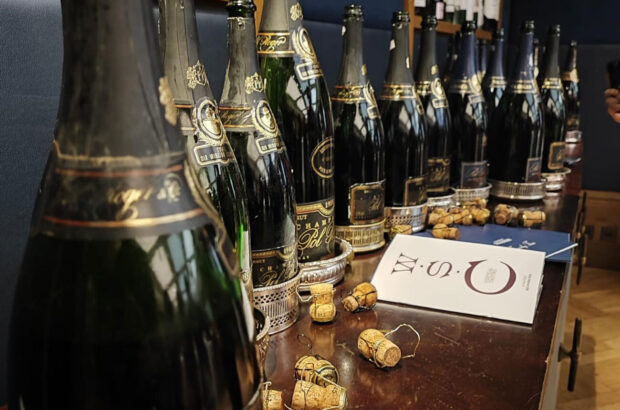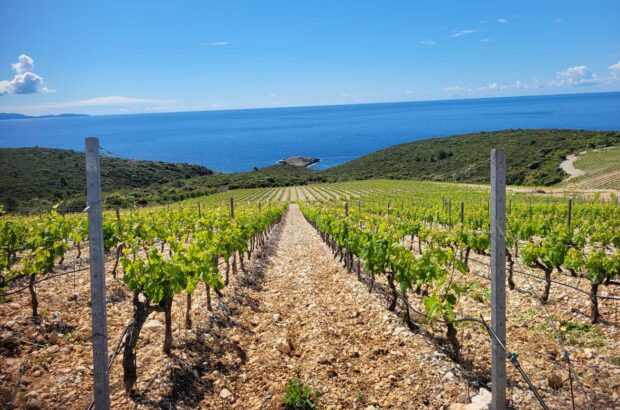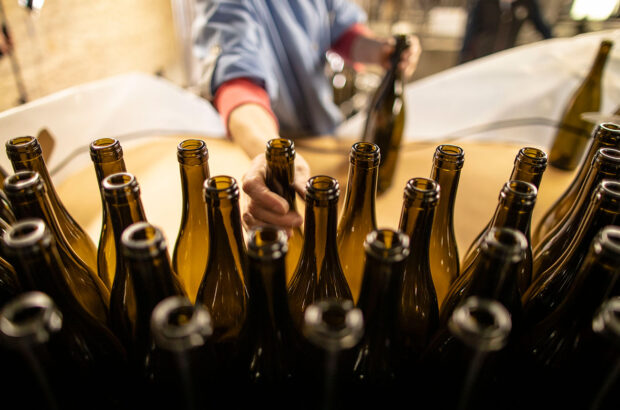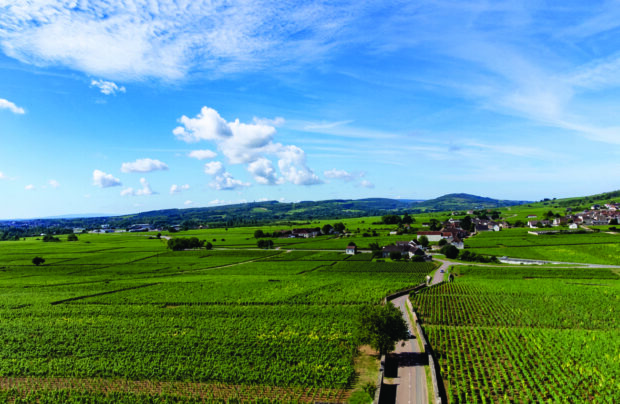Sandro Boscaini
Listening to him talk about the hand-crafted Indian sandalwood he imported for barrels, and about the resulting first batch of wine with its perfume more of exotic soap than treasured Amarone, it’s immediately apparent that Sandro Boscaini, head of Masi, Verona isn’t one to stop trying. Indeed, after perservering with the experiment, Boscaini reveals that on second and third years, the sandalwood is apparently adding a lovely spicy, ‘Kasbah’ element.
With conversation touching on experimental blends, a nursery of clones, Super-Venetians, ventures in Argentina and possibly Armenia, there appears to be no boundaries for the 62-year old. But everything this passionate man says is tempered by his belief in the need to steep change in tradition. ‘The important thing is to use traditional grapes, and techniques from that area,’ he says. ‘I will always make wine recognisably from the Veneto. The common denominator for Venetian wines is style – wines that are approachable and cordial with elegance and simplicity.’
Experimental techniques
Experimentation is at its height in the vineyard where Masi has joined forces with Rauscedo, the leading Italian nursery. Based at Masi’s headquarters in Gargagnago, Valpolicella, the vineyard contains 48 different varieties and clones of grapes. ‘We will be trying numerous microvinifications,’ Boscaini explains. ‘So far numerous varieties have come through: Oseleta, Dindarella (gives a spice, pepperiness, perfect with Bardolina), Forselina (good for sweet Recioto, giving flowers in the nose), Croatina and Negrara.’
Oseleta, believed to be one of the oldest varieties in the world, was rediscovered by Masi in the early 1970s. Two wines on the market from these experiments are Osar (80% Oseleta/20% Corvina), which has more velvety, plummy richness than regular Valpolicella; and Toar (80% Corvina/10% Oseleta), made exclusively from fresh (not dried) grapes.
‘We hope to make a modern wine with an ancient heart,’ said Boscaini, eyes twinkling, possibly due to the number of times he’s meted out that phrase. Yet he is adamant that Masi, despite being one of the region’s biggest players at about two million bottles a year, will retain individuality by offering different styles and vineyard wines. It can do this in part through its partnership with Count Serègo Alighieri, descendant of the poet Dante, whose winery specialises in special selection and single-vineyard Amarones and Reciotos. Research is also ongoing through the Masi Technical Group, made up of experts in viticulture, oenology, geoclimate, history and environment. The study focuses on reviving native vines and discovering their potential as additions to the staple (DOC approved) Corvina, Rondinella and Molinara. ‘Many secondary grape varieties have the potential to give great personality to the wines,’ says Boscaini. Such experimentation outside set grape variety parameters puts the wines outside the DOC – not that this bothers him or, as Tuscany proves, winemakers in other parts of Italy. ‘Super-Venetian? I wouldn’t say no. It’s not a question of what you call the wine – the real question is whether you make wine that is expressive of the area. It’s better to go Super-Venetian, to work with fantasy and technique, making a few good expressions of the region that aren’t necessarily codified in the rule book.’ In the winery Masi is also experimenting with different yeasts on grape varieties, most notably on Corvina, Rondinella and Molinara to emphasise the perfume. ‘In Valpolicella there is a precise perfume that is cherry – maybe we can find better yeast to emphasise it.’ The results will be presented to Vinitaly.
Emphasising flavours is behind the aforementioned panels of intricately carved sandalwood that have been inserted into eight barrels in the Masi cellar. ‘I wanted a spicy wood because Amarone, particularly when old, becomes a very complex, spicy wine, which is sometimes oriental, like incense,’ explains Boscaini. ‘I couldn’t believe it when this artwork arrived – but because the wood is protected, it cannot be exported unless it’s a handmade craft. The first experiment was bad: after four months it tasted of soap. Now, though, the wood has lost its heavy character and adds complexity – it could prove very good.’
Another project using the refermentation ripasso technique, which Masi rediscovered and refined (wine undergoes a second fermentation on the pomace of semi-dried grapes of the same variety), involves mixing different dried grapes – Sangiovese, Cabernet, Raboso and Barbera – with the traditional DOC varieties. The results of this research have yet to be announced.
‘The problem facing us is uniformity. Wine is starting to be boring. Quality is good, but consumers are taking the second step – they now want to taste something of each region.’ The interplay of contemporary and traditional styles is perfectly expressed in the Costasera Amarone Classico Masi 1997 and Vaio Armaron Serègo Alighieri Amarone Classico 1995. Grapes for the Costasera are dried in full humidity and temperature-controlled rooms. Boscaini insists that these ‘still follow the course of nature’, while the technology eliminates the chance of rot that often ruins grapes dried traditionally in lofts open to the elements. This wine had a modern, silky rich texture, a glycerol illusion of sweetness, smoky, upfront fruit and sultana flavours. The Vaio Armaron, from the 25 hectare (ha) estate of Serègo Alighieri, is made with grapes dried in more traditional ‘open’ lofts and showed greater elements of rich tea and mulled smoke, more baroque, a pretension of sweet wine with a bitter bruised sour cherry, and whopping acidity.
Amarone
Quality has become an issue with the recent increase in demand for Amarone, and questions are being raised, not only about the quality level of Amarone, but also the detrimental effect on Valpolicella. ‘The expanding demand for Amarone is a real problem. Producers are taking good grapes from premium Valpolicella vineyards to make Amarone. We obviously hope that this will be good Amarone.
‘The production of Amarone in 1998, 1999 and 2000 is in excess, though we don’t know the exact amounts as it’s still in barrel. Amarone should be made from the best grapes always. By making modest Amarone, we could destroy the name of Valpolicella.’
Given Amarone’s new international status, and its historical weight, why then has it not achieved a G to add to its DOC? ‘Amarone should be DOCG due to its long history,’ says Boscaini, explaining the dispute between the areas that make Amarone and those that have the right to, but don’t use it (and would lose that right if it went DOCG). ‘I don’t think that it’s so important though. If the wine is good, it will be good whichever designation it falls under. People believe that DOCG means greater quality, whereas it actually means more control.’
A suggestion that Boscaini should form a top level body to protect the premium quality of Amarone was met with a verbal brick wall. ‘We are Italians,’ he laughed. ‘We work hard for ourselves, and are far better at pushing ourselves than grouping together.’ Masi has ventured into Argentina at Tupungato, using Malbec and imported Corvina. ‘We’re not making another Amarone,’ he says, ‘but we are fermenting with dry grapes to add personality to the wine.’ Armenia is another area under the spotlight, though the project is in the early stages. As I left, a case of Armenian samples were arriving. ‘We’ll try them. Maybe they’ll be garbage, maybe a possibility, in which case we’ll apply our techniques to make something better.’
So, what of the future for Masi? ‘I see a company not much larger than now, with real value. Maybe expanding outside the region, transferring the area’s character abroad, whether to Argentina, France, Spain or Italy. Maybe we’ll use our winemaking methods with dry grapes on Nero d’Avola,’ he added half-teasingly. ‘We want to be the leader, always more expressive of Venetian culture.’
Though admitting to tiredness as a result of his seven-day working week, Boscaini is nonetheless the perfect host, enthusiastic and charming as we tour the cellar of the Veronese restaurant Bottega del Vino at midnight. In part sincerity, part irony, smiling all the while, he pronounces: ‘I work too hard, but I can’t not. It’s like fashion: Armani has to be there to keep it going how he wants it.’











